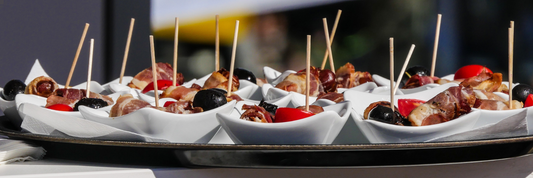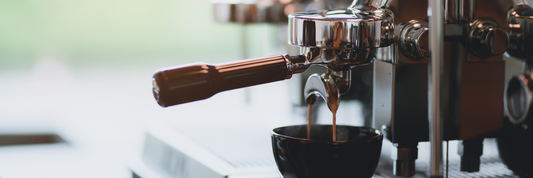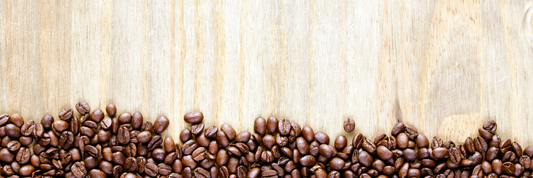Microwaves are a convenient appliance that saves time and effort in cooking and reheating food. However, not all materials are safe to use in a microwave. Using the wrong type of material is not only dangerous for the microwave, but can also cause health risks. In this article, we will learn about the materials that can and cannot be placed in a microwave, as well as the potential risks and how to use a microwave in the safest way.
What is Safe to Microwave?
When heating food in a microwave, there are often two types of considerations: the food container (such as a bowl or cup) and the food content (such as various food types). So, which type of material is safe for microwave use? Let's read below:
Glass
Glass is one of the safest materials to use in the microwave, especially heat-resistant glass like Pyrex and borosilicate glass. These types of glass are heat-resistant and do not easily deform or crack when exposed to high temperatures.
The advantage of glass is that it is chemical-resistant and does not contain harmful ingredients, so there is no need to worry about chemicals from the material leaching into food.
>> Read more: Can You Microwave Glass?

Can You Microwave Porcelain and Ceramic?
- Porcelain and ceramic are also safe materials, as long as they do not have metal rims. When buying, you should check the label "microwave-safe".
- Ceramic dishes are often highly heat-resistant, helping to retain heat for a long time without causing microwave reflection like metal.
Can You Microwave Paper Parchment?
Yes, parchment paper is microwave-safe. It is designed to withstand high temperatures (typically up to 420-450°F / 215-232°C) and does not release harmful chemicals when heated.
>> Read more: How long can parchment paper go in the microwave

Can You Microwave Paper Towels?
Yes, paper towels are generally safe in the microwave, but with precautions.
How to safely use paper towels in the microwave:
- Use plain, white paper towels (avoid those with prints or dyes, as they may contain chemicals).
- Dampen the paper towel when covering food to prevent overheating.
- Do not fold or bunch up the paper towel—this can trap heat and increase fire risk.
- Avoid overheating—only microwave for short intervals.

Can You Microwave Paper Plates?
Yes, plain paper plates are generally safe to microwave. However, some disposable plates have a thin plastic or wax coating, which can melt or release harmful chemicals when heated.
Read more: Can Paper Plates Go in the Microwave?
Can You Microwave Silicone and Heat-resistant Plastics?
- Silicone designed for microwaves is a safe choice. Silicone baking containers or molds are heat-resistant and do not contain toxic substances.
- For plastics, only use plastics labeled "microwave-safe", avoid unsafe plastics because they can release toxic chemicals when exposed to heat.
Can You Microwave Ziploc Bags?
Yes, Ziploc bags are microwave-safe for defrosting and reheating food, as long as you follow the label instructions. According to the manufacturer, their bags are designed to withstand microwave heat when used properly.
If you’re using a different brand of storage bags, always check for a microwave-safe label and follow the provided guidelines. If the bag’s safety is uncertain or instructions are unavailable, it’s best to avoid microwaving it to prevent potential melting or chemical release.
What is Not Allowed in Microwave?
It’s important to know what cannot be microwaved. Below is a list of things you should never put in the microwave.
Metals in Microwave
- Metals should never be used in a microwave oven. Metal can reflect microwaves, creating sparks and fires. Items such as knives, forks, spoons, or plates with metal rims are also dangerous.
- Aluminum foil is another metal material that should not be used because it can cause serious accidents.

Can Plastic Go In The Microwave?
- Regular Plastic: Plastics that are not labeled "microwave-safe" can melt when exposed to high temperatures and release toxic chemicals such as BPA and phthalates into food. This is especially dangerous to human health.
- Disposable Plastic Containers: Disposable plastic containers, such as those from processed foods, are not microwave-safe. These containers are not designed to withstand high temperatures and may deform or release chemicals when used in a microwave.
Can You Microwave Styrofoam?
Styrofoam is a common material used in food packaging, but it is not safe to use in a microwave. When heated, the foam can melt and release harmful chemicals into food.
What Food Can You Microwave?
What Foods Can You Put in Microwave?
Most foods are safe to use in the microwave. Here is the list of foods that are safe to use with microwaves:
- Fruits and vegetables
- Meat, poultry, and fish
- Grains and legumes
- Leftovers
What Foods Are Not Microwave Safe?
- Eggs: When heated, eggs might explode, resulting in a messy cleanup.
- Whole peppers: Due to the rise of steam pressure in the microwave, whole peppers can burst.
- Capsaicin: Capsaicin is released into the air by hot peppers, which can irritate your eyes and lungs.
- Frozen Meat: Frozen meat might cook unevenly in the microwave, leaving some sections frozen and others cooked.
How Do You Know If a Product Is Microwave Safe?
Look for the microwave-safe mark to see if an item is safe to use in the oven. Usually, a triangle or wavy line with the number five or an image of a microwave appears as this sign. The material is safe to use in the microwave if it bears this symbol. Typically, packaging has the microwave-safe mark printed on the back or bottom.
If you can't identify the sign, try to figure out what the products are made of. To avoid incidents, keep in mind the items listed above that are harmful to use with a microwave or unlabeled, suspicious products.

Understand Right Microwave Safe Symbol
Additional Tips for Using a Microwave Oven
- Cover food: Covering food prevents splattering and helps to maintain moisture.
- Stir food halfway through cooking to ensure even heating.
- Use a food thermometer to check the interior temperature of meat, poultry, and fish for safety.
- Allow food to rest: Allow food to rest for a few minutes before serving to allow heat to disperse evenly.
- Keep the microwave clean by wiping it down after each use.
- Remove tough stains: For tough stains, use a baking soda or vinegar solution.
- Clean the door seal and vents: To keep the seal and vents operating properly, clean them on a regular basis.
Risks of Using Unsuitable Materials
- Using unsuitable materials in a microwave oven can cause fires, damage the appliance and endanger the user.
- Toxic chemicals such as BPA and phthalates can leach into food from poor quality plastics, posing a risk of serious health problems.
- Fires and explosions caused by reflected waves from materials such as metals can cause unfortunate accidents.
Why Should You Use Microwave?
Microwaves have become one of the most popular kitchen devices as a result of their helpful activities. Here are a few advantages of it:
- Convenience: Using a microwave can be quite practical. Because they are tiny in size, microwaves are appropriate for use in homes, small businesses, and even stores. Food can be quickly reheated with the aid of a microwave. Food usually warms up and is ready to use in a matter of minutes, sometimes even only a few dozen.
- Energy-saving: Compared to other oven types, microwaves consume less energy. Microwaves use less time and energy than traditional ovens to cook the same amount of food.
- Versatility: Noodles, rice, soups, and many other dishes can be cooked, reheated, or defrosted in a microwave.
How Does Microwave Work?
A microwave oven uses indirect heat to heat food rather than direct heat. Alternatively, food is heated internally by microwaves in microwave ovens. Microwave ovens, in particular, employ microwaves to excite water molecules in the food, causing them to vibrate and generate heat.
Microwaves heat the food directly, whereas the cookware is indirectly heated by the food.
The temperature of the meal will be determined by a number of factors, including the microwave's power, cooking time, and the type of food being heated.
- Microwave power: microwave power is determined by watts. Wattages of microwaves vary from 500 to 1200. Lower than 700 will not cook food evenly, so it is not recommended for cooking. The 1100-watt microwave is suitable for heating, cooking, and defrosting food.
- Cooking time: Food will become hotter in a microwave oven the longer it is cooked. It's important to observe so that food is not overdone.
- Food type: Those with a high-water content, such as vegetables and fruits, will heat up faster and to a greater temperature than those with a low water content.
FAQs About What Can You Microwave Safe?
Are Paper Containers Microwave Safe?
Not every paper container can be used in a microwave. It is dependent upon the kind of paper and the particular container. On the container, look for the microwave-safe mark.
Is Paper Bowl Microwavable?
Not all paper bowls can be microwaved, but some can. Check the bowl for the microwave-safe symbol. Do not use a bowl in the microwave if it does not have this sign.
Can Paper Cups Go in The Microwave?
Sometimes, plain paper cups without coatings may be microwave safe for short heating periods. However, many disposable paper cups have a plastic or wax lining that can melt, so it’s best to avoid microwaving unless they are labeled as microwave-safe.
Is It Safe to Put Paper in the Microwave?
Yes, plain paper can be microwaved safely for short periods, such as paper towels or napkins. However, avoid microwaving printed, coated, or metallic paper, as it can cause fires or chemical releases.
Conclusion
In summary, it is essential for both customers and businesses to understand what is safe and harmful to use with microwaves for a variety of reasons. At Kimecopak, we offer a variety of freezer- and microwave-safe food packaging options, such as paper soup containers and to-go box, that are useful for both business food packaging and consumer consumption. Please visit the website kimecopak.ca, send an email to halo@kimecopak.ca, or message us on Kimecopak Facebook Page to learn more information.




